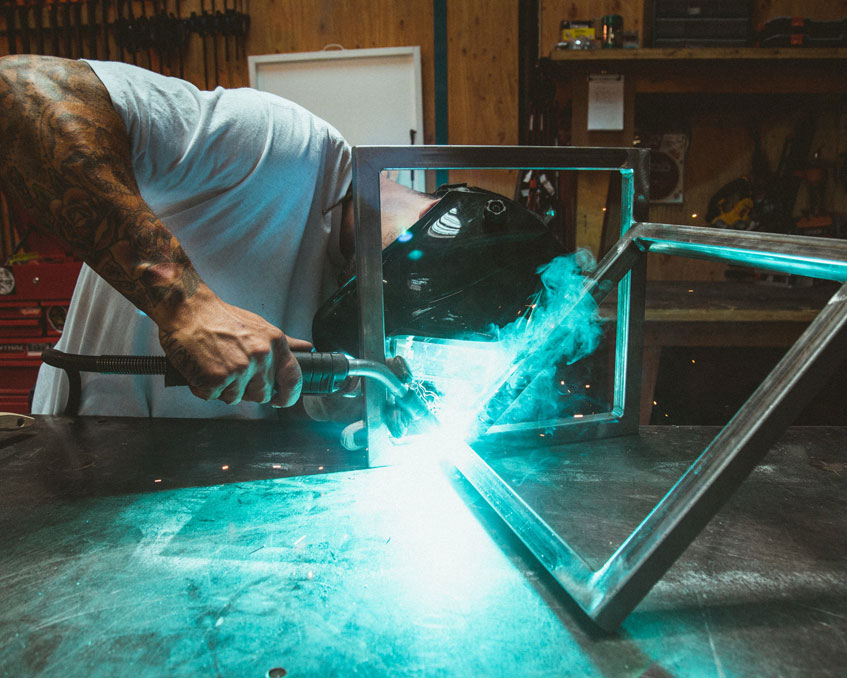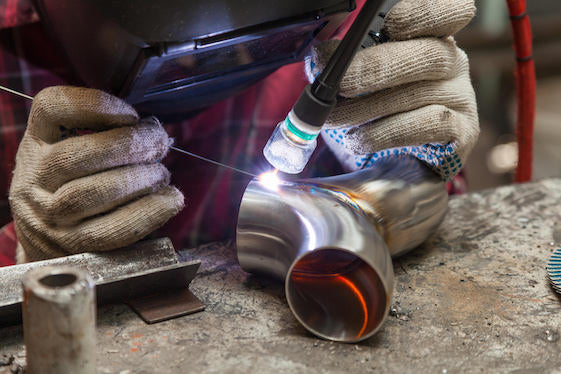Causes of weld porosity and how Belgrade Welding addresses them
Wiki Article
All About Welding: Key Insights Into Techniques and Finest Practices for Success
Welding incorporates a variety of techniques, each suited for particular materials and applications. Comprehending these methods, such as GMAW, SMAW, and TIG, is crucial for accomplishing optimal outcomes. Moreover, the ideal equipment and safety practices can not be neglected. As preparation and fixing play essential roles in the welding process, understanding these elements can considerably enhance the top quality of the end product. What are the essential variables that guarantee an effective weld?Comprehending Various Welding Techniques
Welding methods incorporate a selection of approaches, each matched to specific applications and products. Among one of the most typical strategies are Gas Metal Arc Welding (GMAW), Shielded Metal Arc Welding (SMAW), and Tungsten Inert Gas Welding (TIG) GMAW, also referred to as MIG welding, is prominent for its speed and convenience, making it suitable for thin materials. SMAW, or stick welding, is favored for its simpleness and effectiveness in outside environments, especially with thicker metals. TIG welding uses accuracy and control, making it appropriate for complex job and non-ferrous steels (Welding). Each technique has its distinct advantages and considerations, allowing welders to select the ideal method based upon the project's requirements, material type, and wanted outcomes. Recognizing these strategies is essential for effective weldingCrucial Welding Devices and Tools
While numerous welding strategies require certain skills, the appropriate tools and devices are similarly crucial for achieving high quality results. Essential welding tools includes welding machines, which vary depending on the method-- such as MIG, TIG, or stick welding. Protective gear, consisting of gloves, aprons, and headgears, guarantees safety and security and convenience during the process. Additionally, fixtures and clamps help safeguard materials in location, guaranteeing accuracy in welds. Consumables like welding rods, wire, and securing gas are also vital parts that affect the high quality of the weld. Devices such as mills and cutters help with surface prep work and post-weld ending up, adding to a professional result. Purchasing top notch tools inevitably boosts the efficiency and efficiency of welding tasks.Safety And Security Practices in Welding
Appropriate security techniques are essential in the welding market to secure employees from prospective dangers. Welders need to put on proper personal protective equipment (PPE), consisting of helmets with appropriate shading, handwear covers, and flame-resistant garments. Sufficient ventilation is crucial to reduce exposure to hazardous fumes and gases created during the welding procedure. In addition, workers ought to be learnt the correct handling of welding equipment to stop crashes. Fire precaution, such as maintaining flammable products far from the welding location and having fire extinguishers readily offered, are essential. Routine examinations of equipment and work areas can aid determine potential hazards before they cause accidents. By adhering to these safety and security practices, welders can produce a more secure working atmosphere and lessen dangers connected with their trade.Preparing Materials for Welding
Preparing materials for welding is a crucial step that considerably affects the high quality and stability of the end product (Fabrication). Proper prep work entails cleaning the surfaces to get rid of contaminants such as oil, dirt, and rust, which can endanger the weld. Strategies such as grinding, fining sand, or utilizing solvents are typically used to achieve a tidy surface area. Additionally, making certain that the materials mesh snugly is vital; spaces can result in weak welds. It's also essential to think about the positioning and positioning of the elements, as this will impact the ease of welding and the final outcome. Finally, picking the appropriate filler product and making certain compatibility with the base metals is essential for attaining solid, resilient weldsTips for Achieving High-Quality Welds
Achieving top quality welds requires focus to information and adherence to finest practices throughout the welding procedure. Correct joint prep work is crucial, ensuring surface areas are cost-free and tidy from contaminants. Choosing the proper filler product and welding method based on the base steels is critical for optimal bonding. Maintaining constant traveling rate and angle while welding can promote and protect against defects harmony. Additionally, controlling warmth input is vital; excessive warmth can result in warping and damaged joints. Frequently evaluating the welds throughout the procedure enables prompt changes if essential. Ultimately, using suitable post-weld treatments, such as cleansing and stress relief, can enhance the toughness and stability of the weld, ultimately ensuring a successful result.Troubleshooting Usual Welding Issues
Welding often offers difficulties that can affect the high quality and stability of the final product. Typical problems such as porosity, irregular weld grains, and getting too hot can arise, each requiring details troubleshooting techniques. Comprehending these issues is important for welders to boost their abilities and achieve ideal results.Porosity Problems Explained
Although porosity can frequently be forgotten, it stays an important issue in welding that can jeopardize the stability of an ended up item. Porosity describes the visibility of small gas pockets within the weld bead, which can damage the joint and lead to early failing. This trouble generally occurs from contaminants, wetness, or improper shielding gas coverage during the welding process. To minimize porosity, welders should verify that the base materials are tidy and dry, use appropriate shielding gases, and keep consistent welding criteria. Frequently checking the devices and atmosphere can additionally help determine prospective problems before they manifest in the weld. Attending to porosity effectively is crucial for achieving strong, long lasting welds that fulfill high quality requirements.
Irregular Weld Beans
Inconsistent weld grains can considerably affect the top quality and stamina of a finished item. Different factors contribute to this concern, including incorrect traveling rate, wrong amperage settings, and inconsistent electrode angles. When api 577 the welder relocates as well promptly, a bead may show up slim and lack infiltration, while moving too slowly can create too much buildup. Furthermore, utilizing the wrong amperage can cause either damaging or extreme spatter, both of which compromise weld integrity. The welder's strategy, such as irregular lantern motion, can also cause irregular grain look. To mitigate these problems, welders need to focus on preserving steady, regulated motions and guaranteeing appropriate devices setups to accomplish uniformity in their welds. Consistency is key to achieving reliable and strong welds.Overheating and Warping Issues
Extreme warm throughout the welding procedure can bring about significant getting too hot and warping concerns, impacting the architectural stability of the workpiece. These troubles usually manifest as distortion, which can compromise placement and fit-up, making further assembly challenging. Aspects contributing to overheating include the option of welding specifications, such as voltage and travel speed, along with the sort of product being bonded. To minimize these problems, welders must maintain consistent travel rate and suitable heat input small welder while keeping an eye on the work surface temperature. Furthermore, pre-heating or post-weld heat treatment can aid relieve stresses brought on by quick cooling - Montana Mobile Welding and Repair Welding. Regular evaluation and adherence to best techniques are vital in avoiding getting too hot and making certain the durability and dependability of welded frameworksFrequently Asked Concerns
What Are the Job Opportunities in the Welding Industry?
The welding market offers varied occupation possibilities, consisting of placements as welders, assessors, educators, and engineers. Professionals can operate in production, construction, aerospace, and automotive industries, benefiting from solid need and affordable wages in various functions.How Can I Enhance My Welding Speed Without Sacrificing Top Quality?
To improve welding rate without compromising top quality, one should practice effective strategies, preserve tools, maximize settings, and boost hand-eye control. Regular training and looking for feedback can likewise significantly add to accomplishing faster, top quality welds.What Qualifications Are Readily Available for Welders?
Many certifications exist for welders, consisting of those from the American Welding Society (AWS), the National Center for Construction Education and Study (NCCER), and various industry-specific companies. These qualifications boost employability and demonstrate skill effectiveness.Just How Does Welding Affect the Residences of Metals?
Welding influences the properties of metals by altering their microstructure, which can bring about adjustments in hardness, ductility, and toughness. Heat input and air conditioning prices throughout the process substantially influence these product attributes.Can I Weld Dissimilar Metals With Each Other?

Report this wiki page